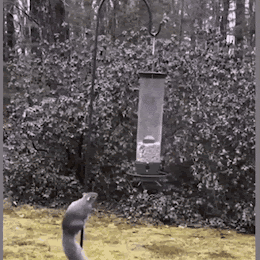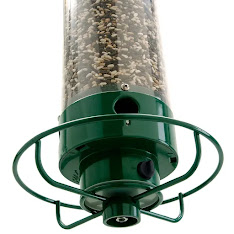Squirrels get hungry, like any animal, but these creatures are known to gather food from any source they can find. Even if that food is not meant for squirrels, such as birdfeed. That is why some companies invented bird feeders that prevent squirrels from stealing the food through a weighted motor that spins when the weight of a squirrel sets it off, like the one pictured above. The circular motion of their spin is controlled by physics!
Centrifugal force is one aspect acting on the squirrel that pushes the squirrel away from the center of the feeder. This force is what helps to knock off the squirrel from the feeder as the rotational motion increases. Rhett Allain likes to think of this force as a "fake force" acting in the direction opposite the center of the circle. Whereas centripetal acceleration works to accelerate the squirrel in a circular motion by accelerating towards the center of the circle. Once the centripetal force gets too high, the squirrel is thrown off in a tangential path to the motion of the circle.
Image sources:




No comments:
Post a Comment
Note: Only a member of this blog may post a comment.